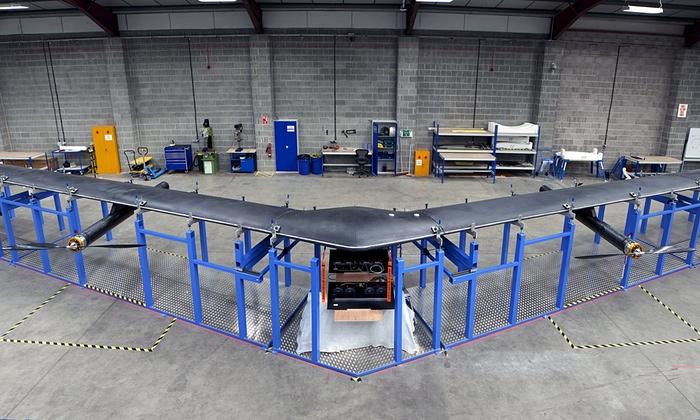
Aquila is a project borne out of Facebook’s Connectivity Lab, and part of the company’s ambitious plan to provide Internet access to the more than 4 billion people currently without it. The carbon-fiber UAV, which was built in 14 months, will operate in the stratosphere (between 60,000 and 90,000 feet) to avoid inclement weather and commercial aircraft, and sustain flight for as many as 90 days before needing maintenance.
The current iteration lacks networking equipment or even landing wheels. The Aquila team is experimenting with helium balloons that lift the plane to the desired altitude, and a separate Facebook engineering division in Woodland Hills, California, is developing communications tech “10 times faster” than state-of-the-art wireless. It’s precise enough to hit a dime-sized target from a distance of 10 miles,
Aquila is very much in the early stages — Facebook has yet to deploy it, and Maguire said it likely won’t reach its 90-day flight goal until the end of this year or early next. But the company envisions a network of linked drones capable of supplying Internet to entire continents.
“Our [goal] is to connect everybody in the world,” Facebook’s vice president of engineering Jay Parikh told The Guardian. “This is going to be a great opportunity for us to motivate the industry to move faster on this technology.”
Facebook’s drone inevitably draws comparisons to Google’s Project Loon, which relies on a mesh of transmitter-equipped balloons. Loon balloons are capable of staying aloft longer — for up to 180 days, Google says — but aren’t directly steerable. Despite that limitation, Google’s already made inroads with Project Loon, launching a successful test in New Zealand in 2013 and most recently signing an agreement with Sri Lanka to provide the country with universal Internet.
Facebook isn’t putting all of its eggs in one basket. The company’s separate initiative, Internet.org, aims to provide mobile connectivity through local carriers in Latin America, Africa, and Asia. But unlike the Internet delivered through Aquila, Internet.org provides access only to a selection of website that vary by region, a limitation of the low capacity and high cost of infrastructer in developing nations. A super-fast network of drones would no doubt be preferable.


